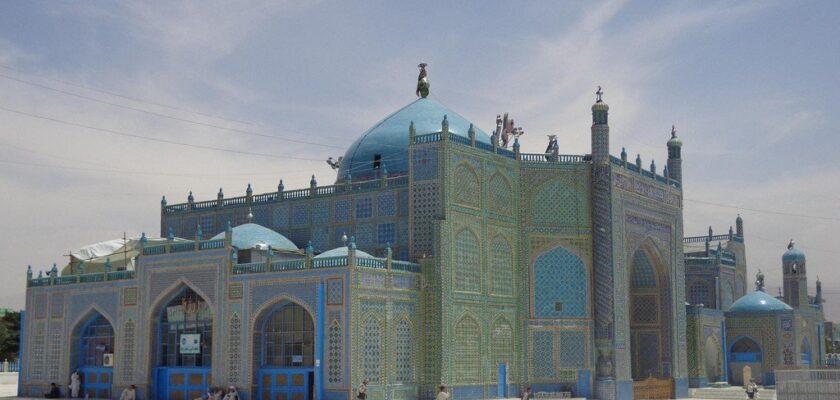Blue Mosque in Mazar-e-Sharif
Blue Mosque or Shrine of Hazrat Ali is a mosque in the city of Mazar-e-Sharif, in Afghanistan. It is one of the supposed burial places of the last righteous Caliph Ali, son-in-law and cousin of the Prophet Muhammad.
.Due to regular restoration work, the Blue Mosque is one of the best preserved ancient monuments in Afghanistan.
.The Blue Mosque is the center of all social and religious life in the city. Every year on March 21, a huge banner, the Yanda, is raised over the temple, symbolizing the beginning of forty days of festivities to welcome the New Year – Nowruz.
The shrine in Mazar-e-Sharif is venerated mainly by Afghan Shiites.
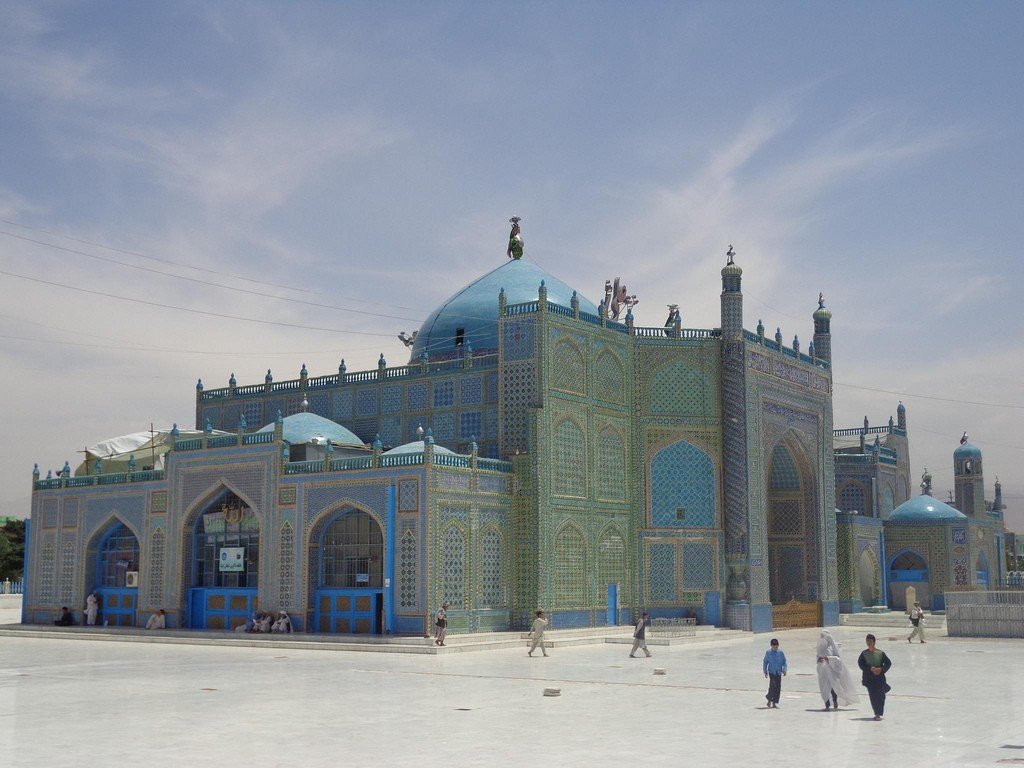
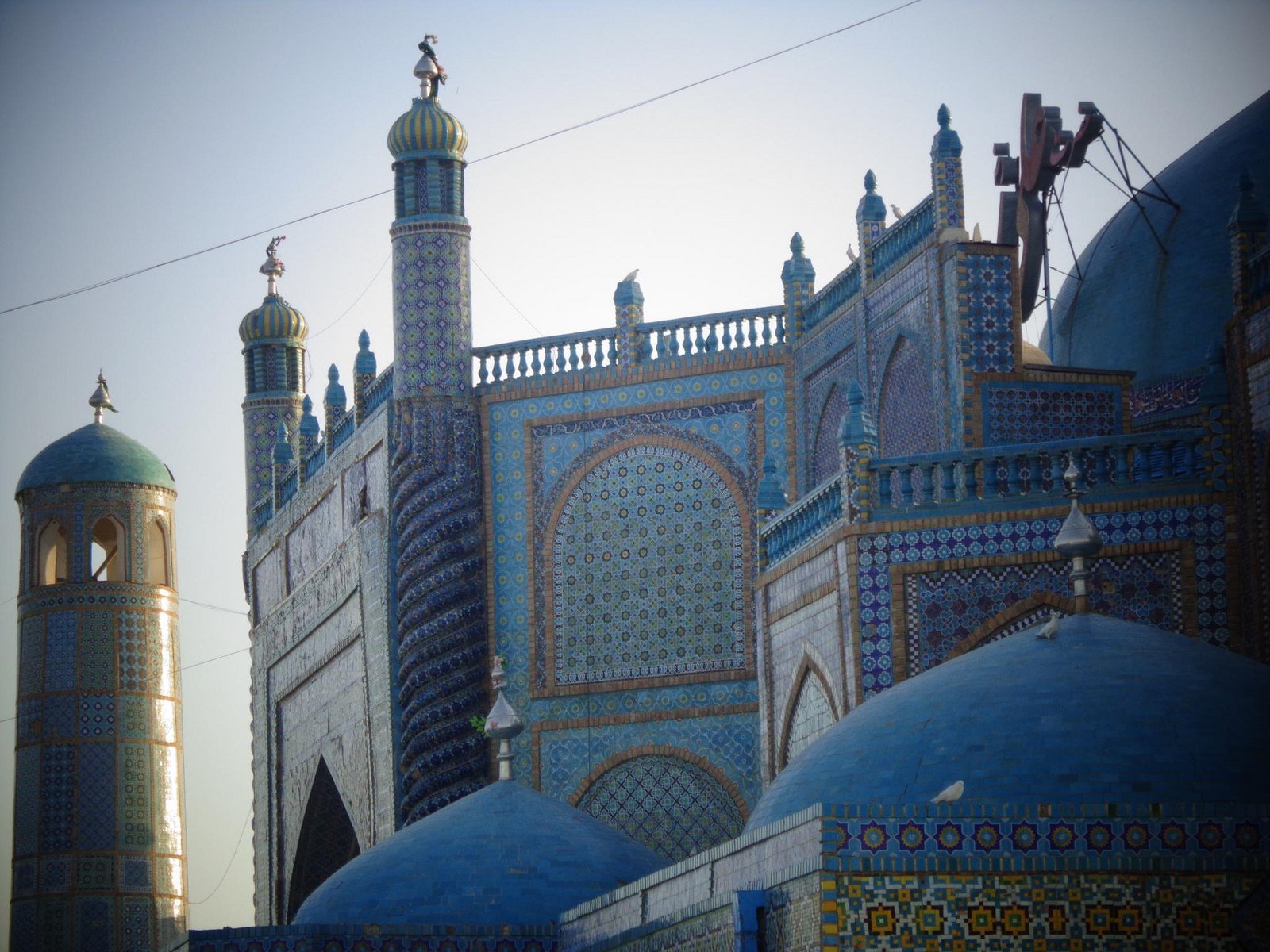
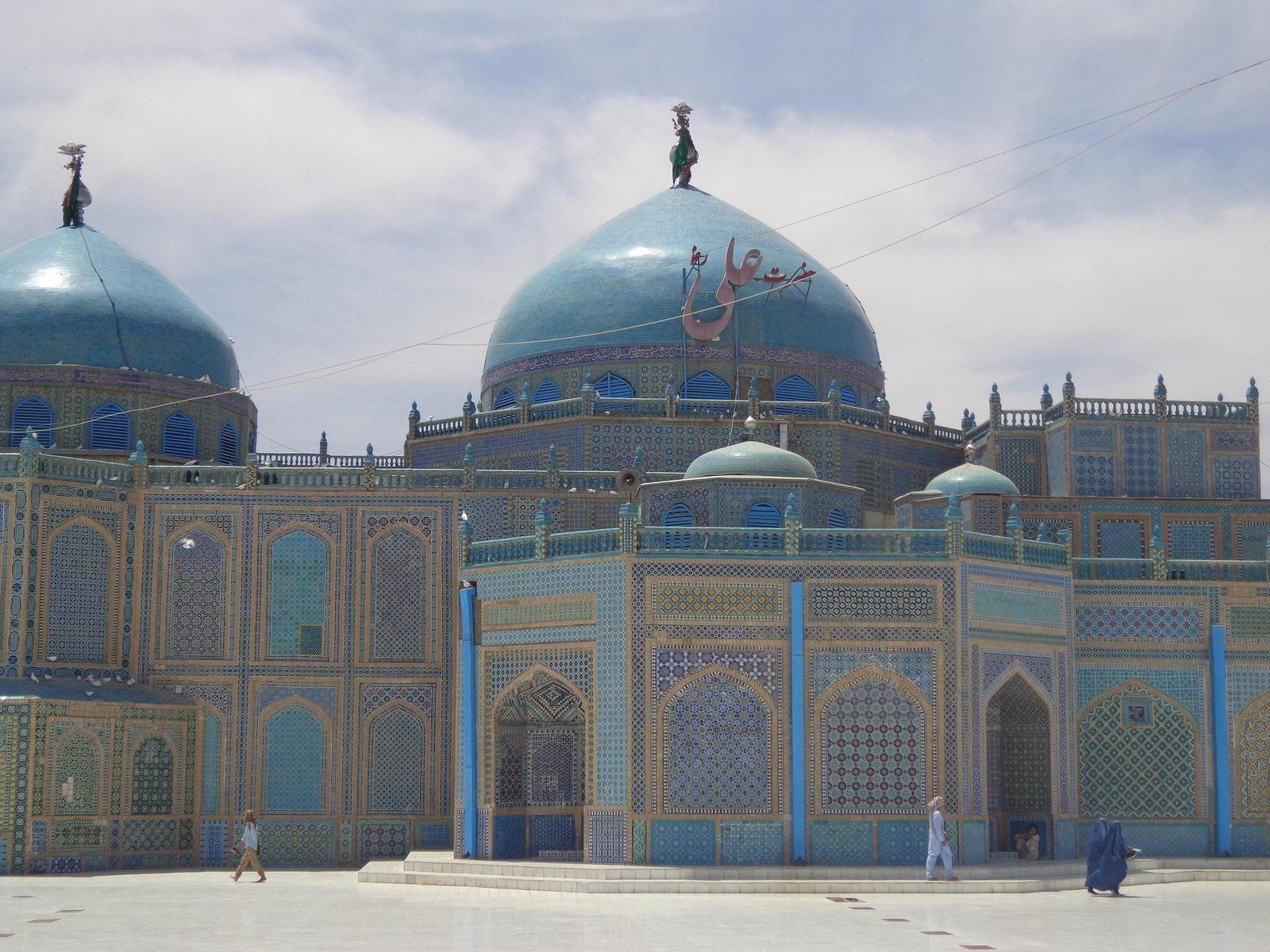
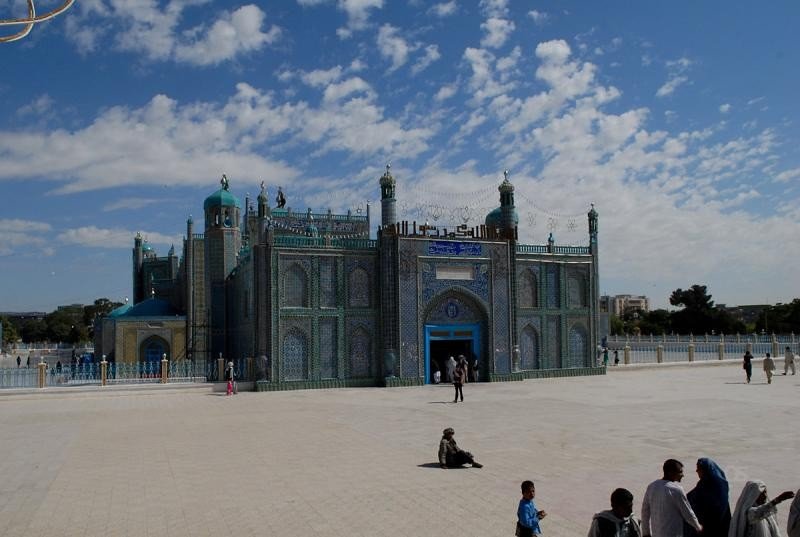
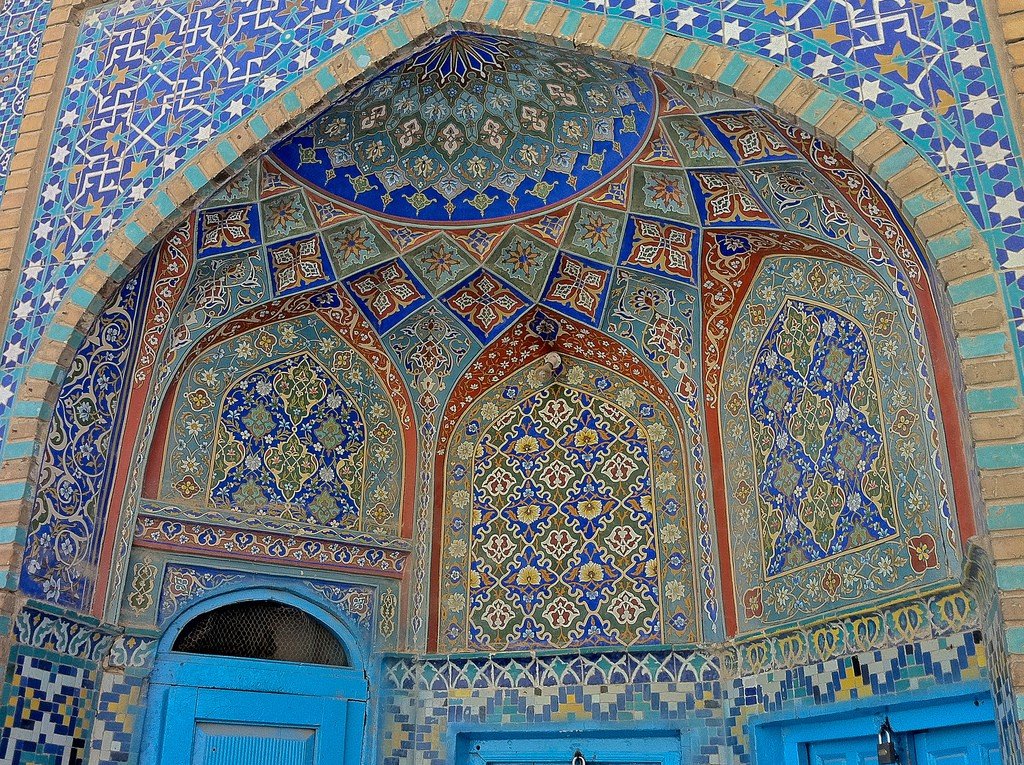
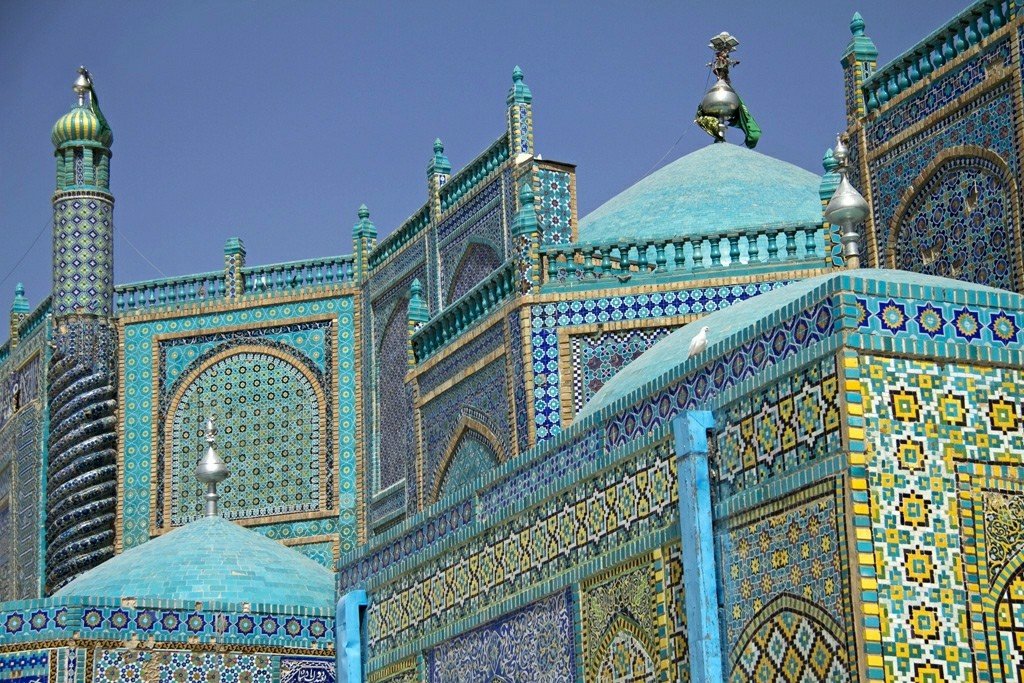
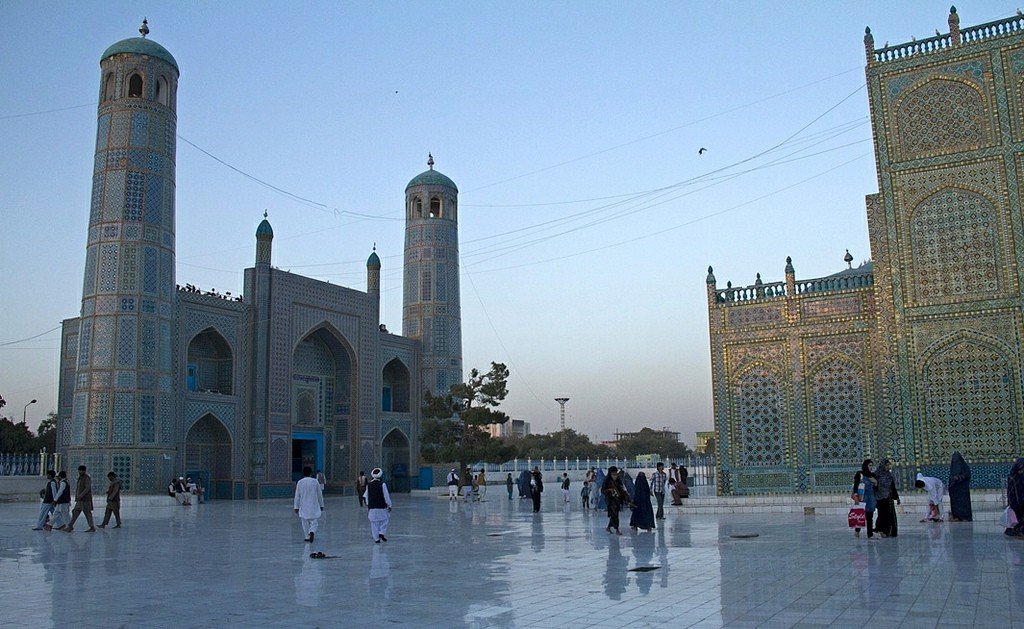
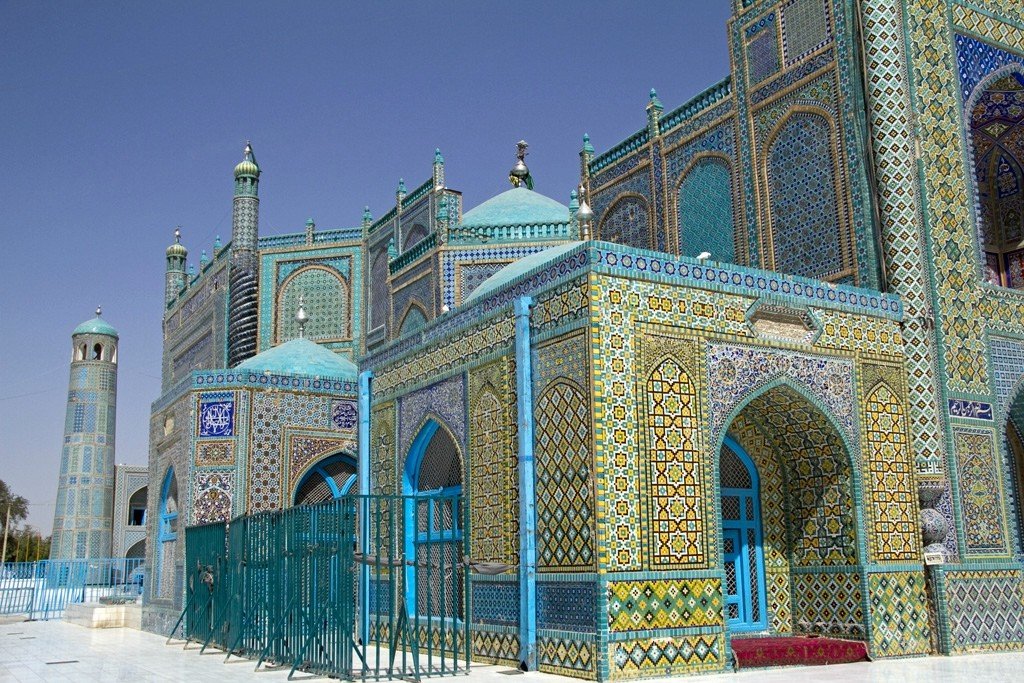
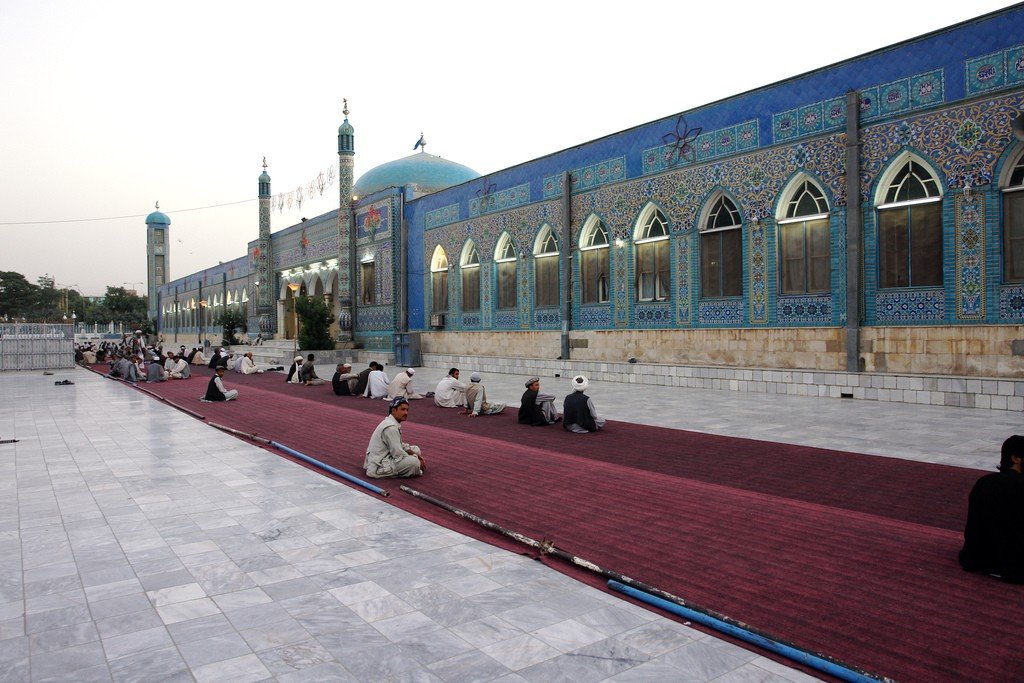
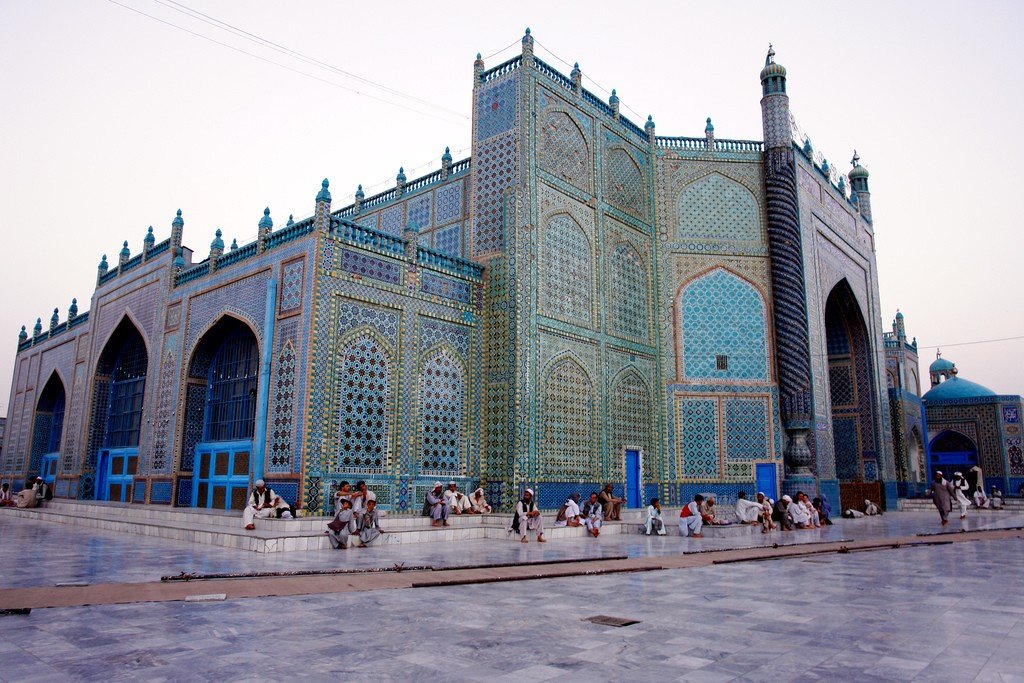
History of the “Holy Tomb”
Ali ibn Abu Talib was the cousin and son-in-law of the Prophet Muhammad, the fourth righteous caliph. According to legend, in the year 661, Ali was assassinated. His sons, fearing that the body of their father would be desecrated, secretly buried him, and later, deciding to hide the remains, loaded the body on a camel and went to the east… The journey was long and exhausting… In the end, the camel fell. This is where Caliph Ali was buried.
.Whether this is true or just a legend is unknown. However, most Shiites believe that the grave of their leader is in Iraq, in Najaf. And, at the same time, some chronicles claim that it was in Mazar Sharif that a temporary mausoleum was built over Ali’s resting place. However, it was wiped out by Genghis Khan’s troops in the early 13th century.
.
Centuries later, a few kilometers from Balkh, pilgrims allegedly found the tomb of the righteous caliph. And for the next 150 years on this place was erected, expanded and then rebuilt a complex of buildings consisting of a mosque, madrasah, caravanserai and other buildings.
.
Restoration work was continued in our time – almost all the decoration of the mosque – it is the work of modern masters.
.And here is one of the tombstones – a marble slab with the inscription “Ali, the Lion of God” – preserved from the early construction.
.In 1998, the Blue Mosque was closed to the public by the Taliban, who had their own ideas about the purity of Islam and opposed “idolatry.”
In 1998, the Blue Mosque was closed to the public.After the capture of Mazar-e-Sharif by Northern Alliance troops, however, the mosque reopened to pilgrims.
.Mosque decoration
Because of the large number of turquoise tiles covering the domes and walls, the mosque was named “Blue.”
The mosque is known as the “Blue Mosque”.In the southern part of the courtyard of the mosque is the mausoleum of Hazret Ali, the walls of which are covered with blue tile carpet. In the courtyard of the mosque, there are tombs of two more saints – Shir-Ali and Akbar-khan.
.
